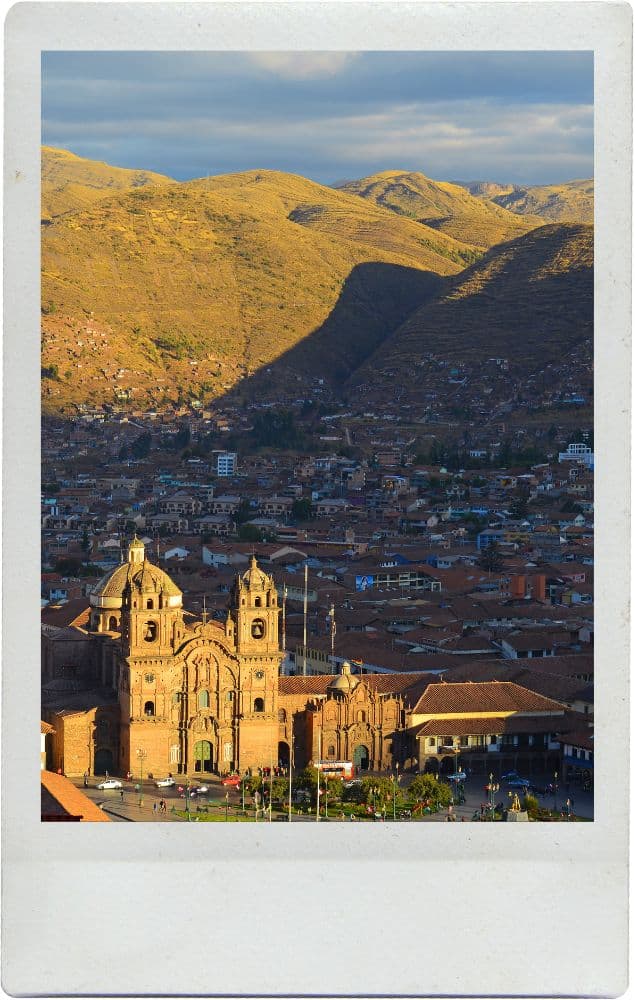15 Amazing Things to Do in Cusco, Peru
At over 11,000 feet above sea level, Cusco Peru isn’t just a city—it’s a breathless arrival into another realm. Once the spiritual and political heart of the Inca Empire, its ancient stones still hum beneath your feet. Here, time folds. Colonial churches rest on sacred temples, cobblestone streets twist like memory, and the sky feels startlingly close.
But the altitude demands your respect. The air is thinner, and your body will notice—some travelers feel light-headed, others slowed down, as if the city itself is asking you to pause. Coca tea helps. So does patience. And maybe that’s the real invitation of Cusco: to slow down, tune in, and listen to what this high place has to teach you.
From Cusco, the world opens wide. You can follow the river into the Sacred Valley, starting with Pisac, a town of mountaintop ruins, artisan markets, and spiritual ceremony. Or take the high road—literally—on the 5-day Salkantay Trek to Machu Picchu, where glaciers, jungle, and ancient paths converge. For those called inward, the mountains cradle transformative experiences like ayahuasca and mescaline ceremonies, often held in silence beneath a canopy of stars.
Cusco is not a stopover. It’s a starting point—for deeper travel, inner stillness, and something ancient awakening in you.
✧ Let your journey deepen:
→ 7 Things to Do in Pisac, Peru: The Gateway to the Sacred Valley
→ 5-Day Salkantay Trek to Machu Picchu: What to Expect & Why It’s Worth It
→ Ayahuasca & Mescaline: 5 Nights in the Heart of Peru
→ 15 Amazing Things to Do in Cusco, Peru
1. Wander the San Blas Neighborhood
If you’re looking for one of the most charming and artistic places to explore in Cusco, don’t miss the San Blas neighborhood. Often called the bohemian heart of Cusco, San Blas is a hilltop district known for its narrow cobblestone streets, whitewashed adobe homes, and vibrant artisan scene. It’s the perfect escape from the busier areas near the Plaza de Armas, yet just a short walk away.
By day, you’ll find local art galleries, textile shops, and handcrafted jewelry studios tucked into the quiet corners of the neighborhood. Many of Cusco’s most talented artisans live and work here, making it a great place to shop for authentic souvenirs while supporting local makers.
By night, San Blas transforms into a cozy village of glowing windows, acoustic music, and candlelit cafes. Try a coca tea at a mountainside café or dine on a balcony overlooking Cusco’s tiled rooftops and distant peaks.
Don’t forget to visit the Iglesia de San Blas, a small colonial church famous for its hand-carved wooden pulpit—one of the most intricate in all of Peru.
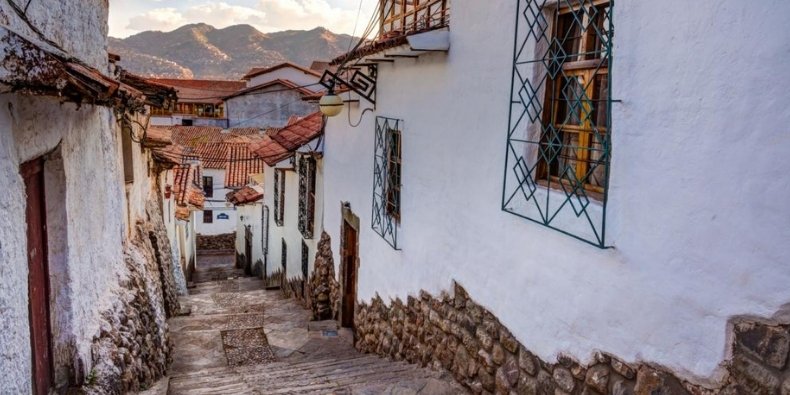
2. Touch the Twelve-Angled Stone
Tucked along the historic Hatunrumiyoc Street in Cusco, the Twelve-Angled Stone (Piedra de los Doce Ángulos) is one of the city’s most fascinating—and photographed—landmarks. This seemingly simple stone is actually a masterclass in Inca engineering. Carved with twelve perfectly interlocking angles, it fits seamlessly into a wall built centuries ago—without mortar, without mistake.
Found in what was once an Inca palace, the wall now forms part of the Archbishop’s Palace in central Cusco, Peru. The precision and artistry of the stonework still baffles architects today and showcases the advanced knowledge the Inca civilization had of seismic stability, geometry, and design.
Visiting the Twelve-Angled Stone is easy—it’s a quick walk from Plaza de Armas and free to view. You’ll likely see a crowd gathered around it, but don’t just snap a photo and leave. Take a moment to run your hand along the polished surface and imagine the hands that shaped it over 500 years ago.
For those interested in Inca architecture, archaeology, or the hidden details of Cusco’s streets, this small but iconic stone is a must-see.
3. Enjoy a Wellness Day: Hypnoze Spa at the Belmond Palacio Nazarenas
Indulge in a luxurious wellness experience at Hypnôze Spa, nestled within the historic Belmond Palacio Nazarenas in the heart of Cusco. This serene retreat offers a perfect blend of ancient Inca traditions and modern relaxation techniques, making it a must-visit for those seeking rejuvenation in Cusco, Peru.
Located in the tranquil Plazoleta Nazarenas, Hypnôze Spa is renowned for its use of indigenous Peruvian ingredients, including herbs, coca leaves, and Andean salts, in its treatments. The spa’s design incorporates original Inca stonework, providing a unique ambiance that reflects the rich cultural heritage of Cusco.
Guests can choose from a variety of treatments, such as personalized massages, body wraps, and facials, all aimed at promoting physical, mental, and emotional well-being. One of the spa’s standout features is its oxygen-enriched environment, designed to help visitors acclimate to Cusco’s high altitude.
After your treatment, unwind in the relaxation lounge, where you can enjoy herbal teas made from the spa’s own garden, or take a dip in the city’s only outdoor heated pool. Whether you’re recovering from a trek to Machu Picchu or simply seeking a peaceful escape, Hypnôze Spa offers an unparalleled wellness experience in Cusco.
For more information or to book a treatment, visit the Belmond Palacio Nazarenas.

4. Visit Qorikancha (Temple of the Sun)
One of the most powerful places in all of Cusco, Peru, Qorikancha—meaning “Golden Temple” in Quechua—was once the most sacred site in the entire Inca Empire. This awe-inspiring structure was dedicated to Inti, the Sun God, and was said to be covered in sheets of solid gold that reflected the light across the city.
Though much of the temple’s golden splendor was stripped away during the Spanish conquest, its spiritual gravity remains. Today, the Santo Domingo Convent sits atop the original Inca foundations, and the contrast is breathtaking: massive interlocking Inca stones at the base, with colonial architecture layered on top—literally and symbolically.
Inside, you’ll find sacred Inca chambers, astronomical niches, and a tranquil courtyard that still carries the resonance of the past. The museum below offers deeper insights into Incan cosmology, engineering, and rituals once performed at this very site.
Located just a short walk from Cusco’s Plaza de Armas, Qorikancha is a must-see for anyone seeking to understand the spiritual and architectural genius of the Inca civilization. It’s not just a ruin—it’s a reminder of how deeply the Inca people were connected to the sun, the stars, and the rhythms of the Earth.

5. Catch a Sunset at Sacsayhuamán
Just above the city of Cusco, Peru, the mighty stone walls of Sacsayhuamán rise like ancient guardians overlooking the red rooftops and rolling hills of the Andes. Once a ceremonial and military complex of the Inca Empire, this UNESCO World Heritage site is a marvel of engineering—some of its stones weigh over 100 tons, yet fit together so precisely, not even a blade of grass can slip between them.
But while the stonework is stunning any time of day, sunset at Sacsayhuamán is something else entirely. As the sun dips behind the mountains, the stones turn gold, the sky catches fire, and the whole city of Cusco begins to glow. Locals gather, travelers pause, and time feels suspended. It’s a sacred hour, where history and nature meet in stillness.
Just a 15–20 minute uphill walk from Cusco’s Plaza de Armas, Sacsayhuamán is easy to reach on foot or by taxi. Bring a blanket, a thermos of coca tea, and let the view do the rest.
Whether you’re a history lover, photographer, or just someone who wants to feel awe again—Sacsayhuamán at sunset is one of the most unforgettable experiences in Cusco.

6. Do a Cacao Ceremony at a Local Workshop
For a soulful experience rooted in ancient wisdom, consider attending a cacao ceremony in Cusco, Peru. Cacao—known as the “food of the gods”—has been used for centuries in South and Central America not just as a drink, but as a heart-opening plant medicine. In Cusco’s sacred atmosphere, this ritual takes on a whole new depth.
A typical cacao ceremony in Cusco begins with setting intentions in a quiet, sacred space. Participants drink ceremonial-grade cacao—rich, earthy, and pure—often sourced from the Amazon or highland regions of Peru. As the cacao begins to work through the body, the ceremony may include elements like breathwork, guided meditation, sound healing, or ecstatic movement, all designed to help you reconnect with your emotions, body, and inner wisdom.
You can find cacao ceremonies offered by local wellness centers such as Munay Medicine, Cacao Source, El Alquimista, and Samadhi Sacred Valley, each blending traditional practices with modern healing modalities.
Whether you’re coming off a trek or simply seeking deeper clarity, a cacao ceremony in Cusco offers a beautiful way to pause, reflect, and soften the heart. It’s not just a drink—it’s a sacred experience.
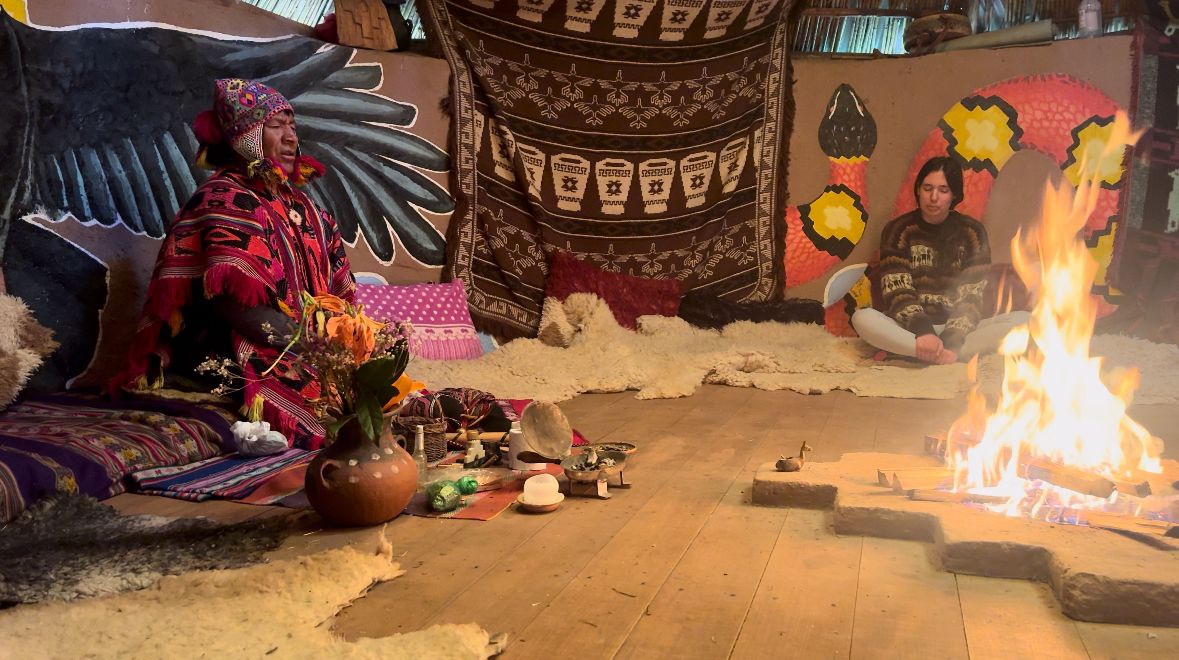
7. Take a Peruvian Cooking Class
One of the most immersive ways to connect with the culture of Cusco, Peru is by taking a hands-on Andean cooking class. More than just food, Andean cuisine tells a story—of mountains, seasons, ancestral techniques, and sacred ingredients passed down through generations.
In these cooking classes, you’ll start by visiting a local market—often San Pedro Market—where you’ll learn about native Andean ingredients like oca, tarwi, huacatay, purple corn, and quinoa. You’ll discover how ancient civilizations used food not just for nourishment, but for ceremony and healing.
Back in the kitchen, guided by a local chef (sometimes even in a traditional home), you’ll learn to prepare iconic Andean dishes such as:
- Pachamanca (meat and vegetables cooked underground with hot stones)
- Quinoa soup with local herbs
- Papa a la huancaína with native potatoes
- Causa andina with yellow chili and avocado
- And sweet treats made from lucuma or chirimoya
Some classes even include pisco cocktail tutorials or vegan/vegetarian options using high-altitude superfoods.
Look for highly rated classes like Cusco Culinary, Peruvian Cooking Classes, or Andean Soul Experience, many of which offer small group or private sessions.
Whether you’re a seasoned foodie or a curious traveler, an Andean cooking class in Cusco is a nourishing way to understand the land, culture, and spirit of the Andes—one bite at a time.
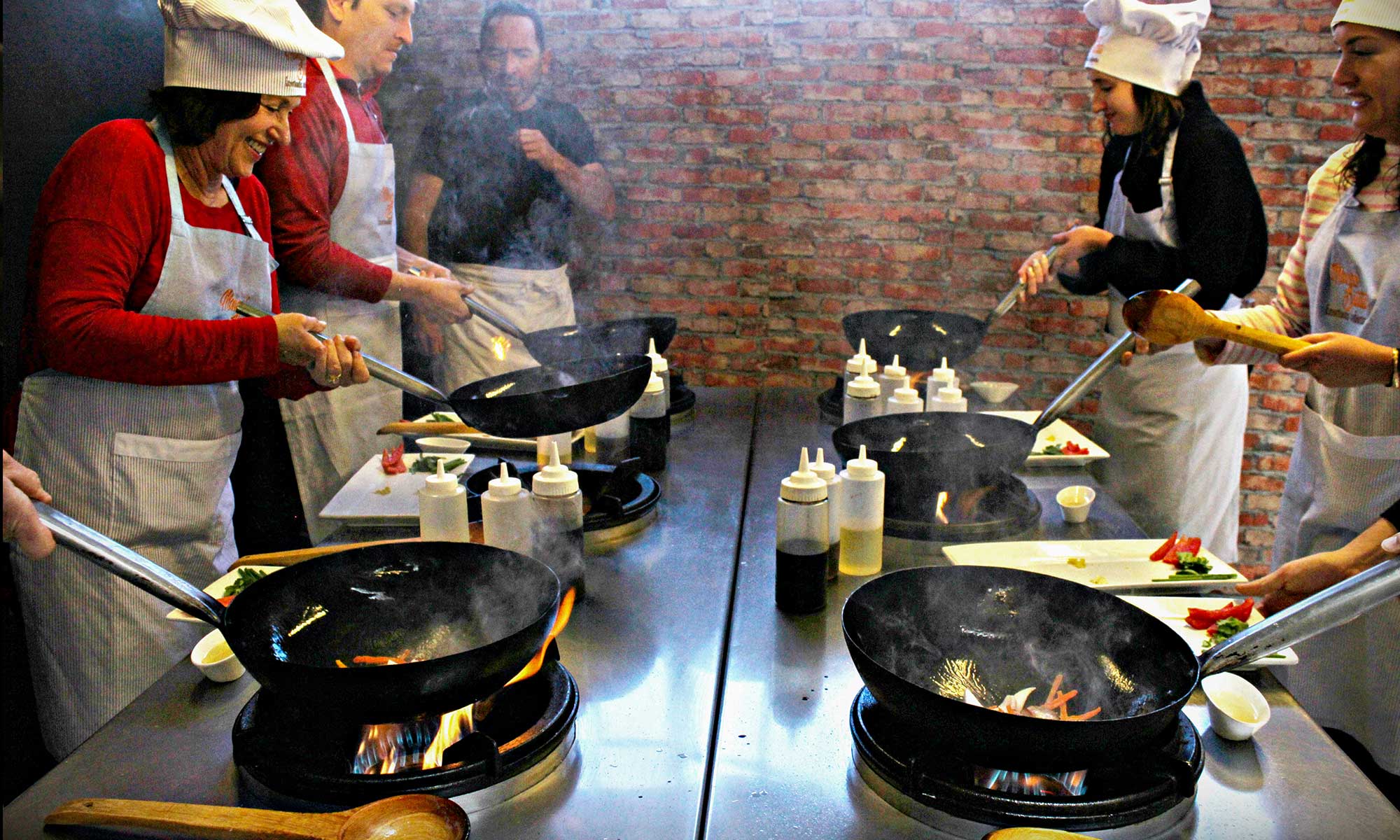
8. Wander San Pedro Market
If you want to feel the pulse of Cusco, Peru, there’s no better place than San Pedro Market. Just a short walk from Plaza de Armas, this lively, colorful marketplace is where tradition, flavor, and daily life collide.
Built in the early 20th century with design input from Gustave Eiffel (yes, that Eiffel), Mercado de San Pedro is a covered maze of stalls overflowing with Andean identity. You’ll find piles of tropical fruits, sacks of quinoa, fresh coca leaves, and rows of rainbow-colored corn—some of which you won’t see anywhere else in the world.
Local vendors sell everything from handwoven textiles and alpaca wool hats to healing herbs, sacred offerings for Pachamama, and freshly squeezed juices made to order. Want to try chicha morada, lucuma smoothies, or maybe even a taste of cuy (guinea pig)? This is the place.
Wandering San Pedro Market is more than a shopping trip—it’s an invitation to slow down, observe, taste, and talk. Ask questions. Try a new fruit. Smell the incense rising from the spiritual stalls. Feel the rhythm of Cusqueñan daily life move around you.
Whether you’re after souvenirs, ingredients for a cooking class, or just want to people-watch over a 3-sol soup, San Pedro Market in Cusco is a must-visit destination that awakens every sense.
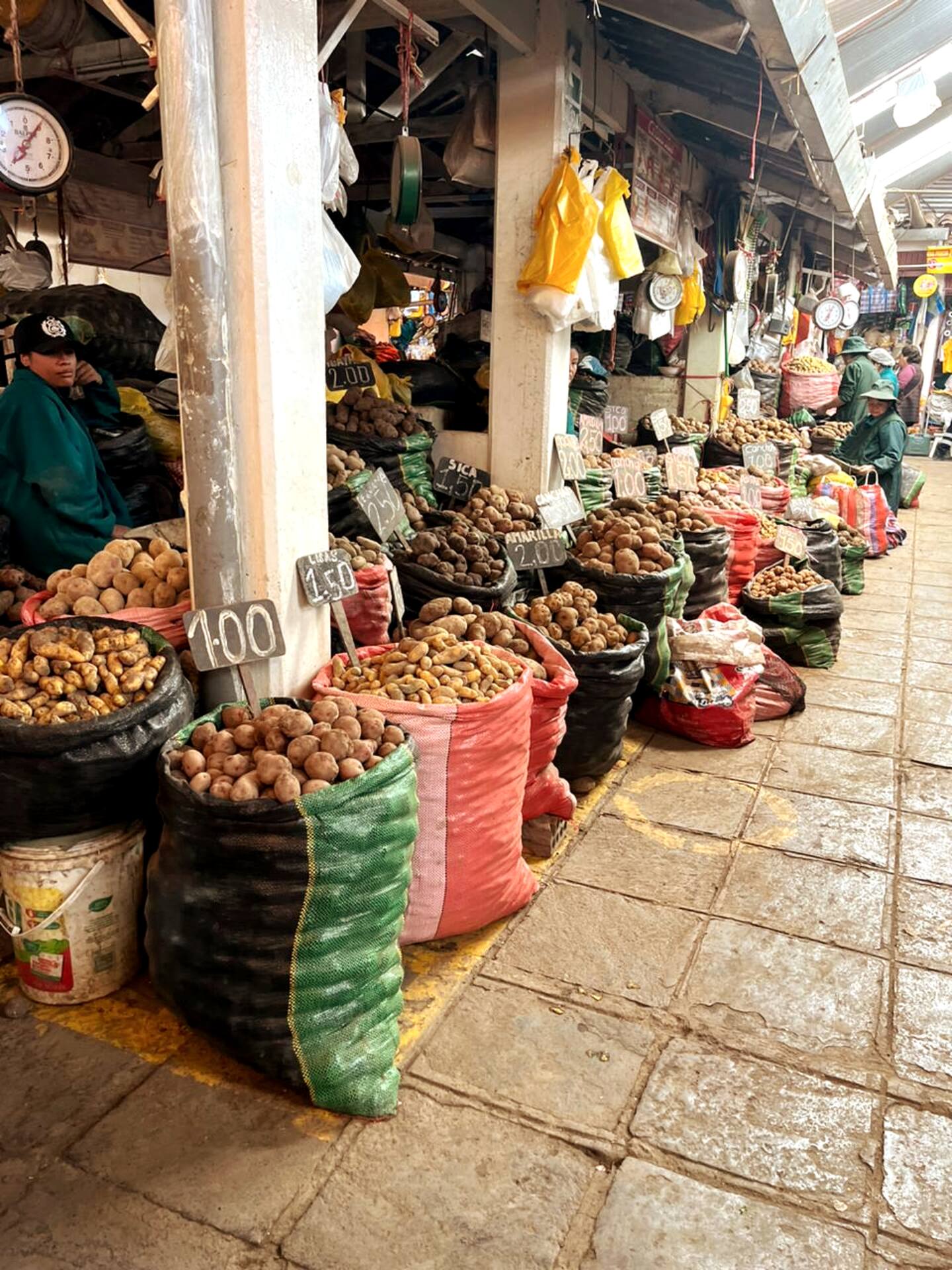
9. Visit the Museo de Arte Precolombino (MAP)
Tucked into a quiet corner of Cusco’s San Blas neighborhood, the Museo de Arte Precolombino (MAP) offers a refined, almost meditative look into Peru’s ancient past. Housed in a beautifully restored 16th-century Spanish colonial mansion—once an Inca ceremonial site—the museum is a peaceful contrast to the city’s bustling streets.
Inside, you’ll find over 400 pieces of pre-Columbian art, spanning more than 3,000 years of Peruvian history. Carefully curated and elegantly displayed, the collection includes ceramics, goldwork, silver, wood carvings, and textiles from the Nazca, Moche, Chimu, Inca, and other great civilizations of the Andes.
What makes the MAP Museum in Cusco special is its balance of aesthetic beauty and cultural depth. Each room is softly lit and thoughtfully arranged, allowing you to slow down and truly absorb the artistry and meaning behind the objects. Placards are in both Spanish and English, making it accessible to international visitors.
For those craving a deeper understanding of Incan and pre-Incan civilizations, the Museo de Arte Precolombino is a must-visit. It’s also just steps away from some of Cusco’s best artisan shops and cafes—making it a perfect stop during a day of slow exploration through San Blas.
10. Join a Fire Ceremony or Andean Offering Ritual
For those seeking more than just sightseeing, Cusco, Peru offers something rare and unforgettable: the chance to participate in an Andean fire ceremony or offering ritual to Pachamama (Mother Earth). These ancestral practices, still alive in the heart of the Andes, are not performances—they are sacred acts of reciprocity, gratitude, and energetic renewal.
Typically led by a Q’ero or Quechua healer (paqo), these ceremonies involve coca leaves, flowers, grains, fat, sugar, and sacred fire. The ritual may take place in the mountains above Cusco, or at retreat centers and healing spaces like Samadhi Sacred Valley, Munay Sonqo, or within Cusco’s sacred hills near Sacsayhuamán.
An offering ritual (despacho) is a way to “feed” the Earth and align your intentions with the natural and spiritual world. A fire ceremony takes that offering and releases it to the unseen—cleansing, transforming, and anchoring a sense of connection that often leaves people speechless.
Whether you’re closing a chapter, setting intentions, or simply curious about Andean spirituality, joining a ceremony in Cusco is a deeply grounding and moving experience. It’s less about what you do, and more about how you feel—present, humbled, and deeply human.

11. Take a Day Trip to Tipón
If you’re looking to escape the crowds and dive deeper into the brilliance of Inca engineering, take a day trip to Tipón, one of the most underrated archaeological sites near Cusco, Peru. Located about 45 minutes southeast of Cusco, Tipón is a serene, green jewel tucked into the mountains—often overlooked, but absolutely worth the visit.
Tipón is best known for its complex system of agricultural terraces and flowing water channels, which still carry fresh spring water to this day. It’s believed the site was once a royal estate or a sacred center dedicated to water—a vital element in Incan cosmology. You can literally hear Tipón before you see it: gentle streams trickle through stone channels, cascading from terrace to terrace like a living aqueduct.
What makes Tipón special isn’t just the architecture—it’s the atmosphere. Far less visited than Machu Picchu or Ollantaytambo, it’s peaceful, almost meditative. You can wander for hours through vast terraces, climb up to scenic viewpoints, and marvel at how the Incas mastered irrigation without modern tools.
Tipón is part of the Southern Valley route, often paired with visits to Pikillacta (a pre-Inca Wari site) and the Sistine Chapel of Andahuaylillas—making it an excellent full-day cultural loop from Cusco.
Perfect for history lovers, nature seekers, and anyone craving stillness after the buzz of the city, Tipón is one of the most sacred and intelligent places you can visit near Cusco.
12. Try Street Food at Night (But Ask a Local First)
As the sun sets over Cusco’s red-tiled rooftops, a different rhythm begins to rise—smoke curling from food carts, grills firing up on street corners, and the unmistakable scent of charcoal, spice, and sizzling meat in the air. Nighttime street food in Cusco is a whole experience—and one that invites you to taste the city as locals do.
You’ll find vendors clustered near Plaza San Francisco, San Blas, and tucked along side streets near San Pedro Market. Classic nighttime bites include:
- Anticuchos – skewers of grilled beef heart, marinated in garlic and spices, served with golden potatoes and spicy aji sauce.
- Tamales and Humitas – warm corn masa wrapped in husks, stuffed with cheese or meat.
- Quinua con leche – a sweet, warming quinoa and cinnamon drink, perfect for the chill in the Andean air.
- Picarones – deep-fried sweet potato doughnuts, drizzled with syrup. Street dessert heaven.
Tip: Not all carts are created equal, so it’s wise to ask a local or your Airbnb host for their trusted favorites. Some vendors have been serving the same recipes for generations—and you can taste it.
Trying Cusco street food at night is one of the best ways to connect with the city’s living culture. It’s casual, flavorful, a little gritty—and completely unforgettable.
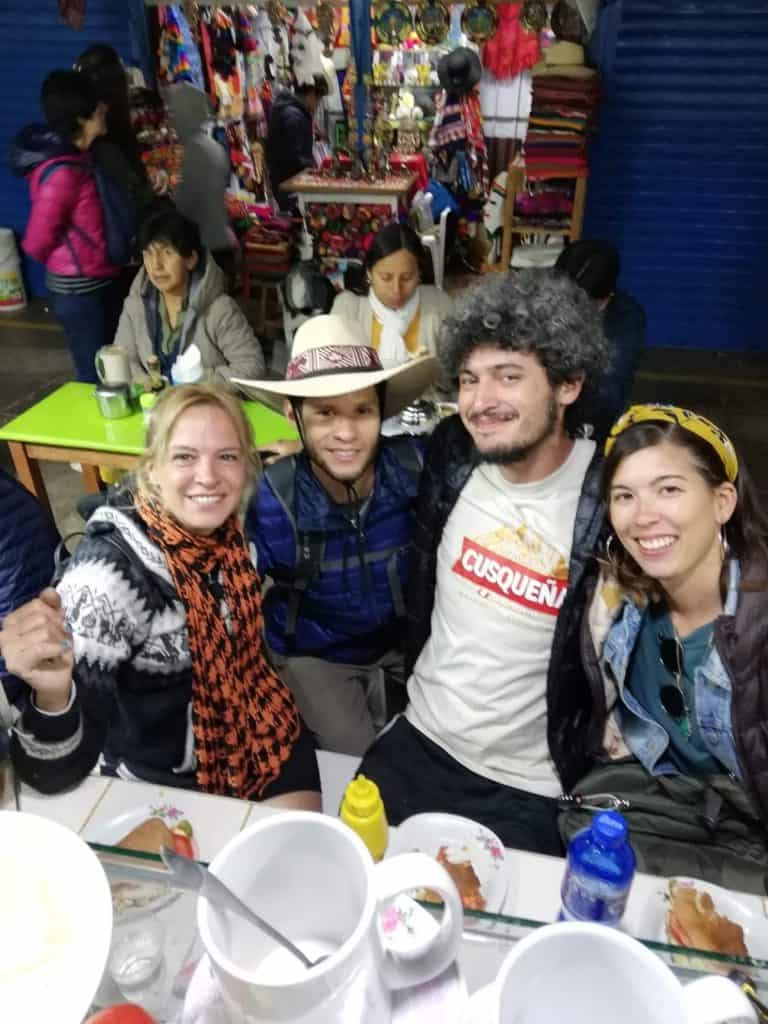
13. Climb to the Cristo Blanco Statue
Perched high above the city, the Cristo Blanco statue is one of the most iconic viewpoints in Cusco, Peru—and getting there is half the magic. Whether you hike up from Plaza de Armas or stop by on your way down from Sacsayhuamán, the climb rewards you with panoramic views of red rooftops, colonial cathedrals, and the rolling hills that cradle the city.
The Cristo Blanco statue itself stands at 26 feet tall, with outstretched arms that seem to embrace the entire valley. Gifted by Palestinian Christians in 1945 as a symbol of peace, the white Christ glows softly at night, visible from nearly every corner of Cusco.
The walk up takes about 20–30 minutes, weaving through narrow cobblestone streets, stone steps, and quiet residential areas. Along the way, you’ll catch glimpses of daily Cusqueñan life—dogs lounging in doorways, kids playing soccer, and the distant sounds of Andean flutes.
At the top, take time to breathe in the crisp mountain air, sit on the stone walls, and watch the golden light fall over the city. It’s especially magical at sunset, when the entire valley glows and the city hums below like a living tapestry.
For photographers, spiritual seekers, or anyone looking to soak in a wide view of Cusco’s beauty, the Cristo Blanco viewpoint is a must-do.
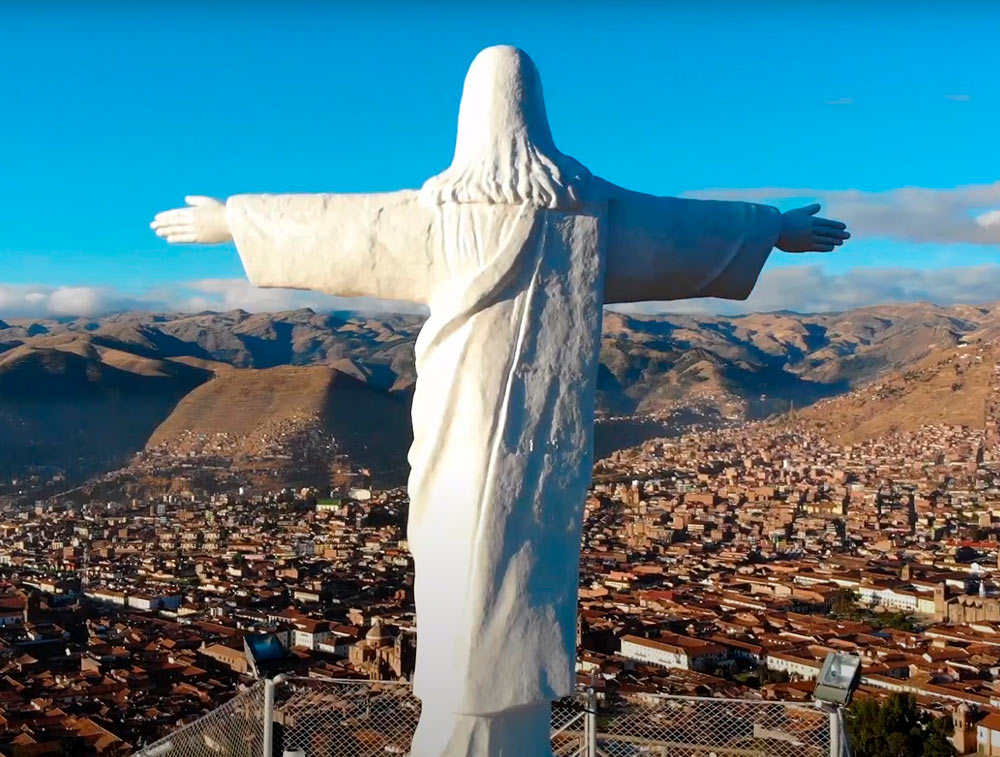
14. Take a Textile Weaving Workshop
In the highlands of Cusco, Peru, weaving is not just a craft—it’s a language of memory, tradition, and cosmic connection. Taking a textile weaving workshop in Cusco offers a rare chance to learn this ancient art directly from Quechua artisans, whose families have passed down these techniques for generations.
Workshops typically begin with an introduction to natural dyeing, where vibrant colors are made from plants, roots, and insects—cochineal beetles for reds, q’olle flowers for yellows, and eucalyptus for soft greens. You’ll learn to spin alpaca or sheep wool using a drop spindle, and try your hand at backstrap weaving—a method that connects your body to the loom itself, just as Andean women have done for centuries.
More than just technique, you’ll come to understand how each pattern in Andean textiles tells a story—of mountains, animals, dreams, and even prayers. Some symbols protect the weaver, others honor Pachamama (Mother Earth), and many are deeply personal.
Highly respected centers like the Centro de Textiles Tradicionales del Cusco offer half-day or full-day workshops, with English-speaking guides and the chance to meet master weavers from remote Andean villages. You’ll leave with your own handmade piece—and a deeper respect for the patience and soul woven into every thread.
If you want to support sustainable tourism, preserve cultural heritage, and engage in mindful, hands-on travel, a weaving workshop in Cusco is one of the most meaningful experiences you can have.
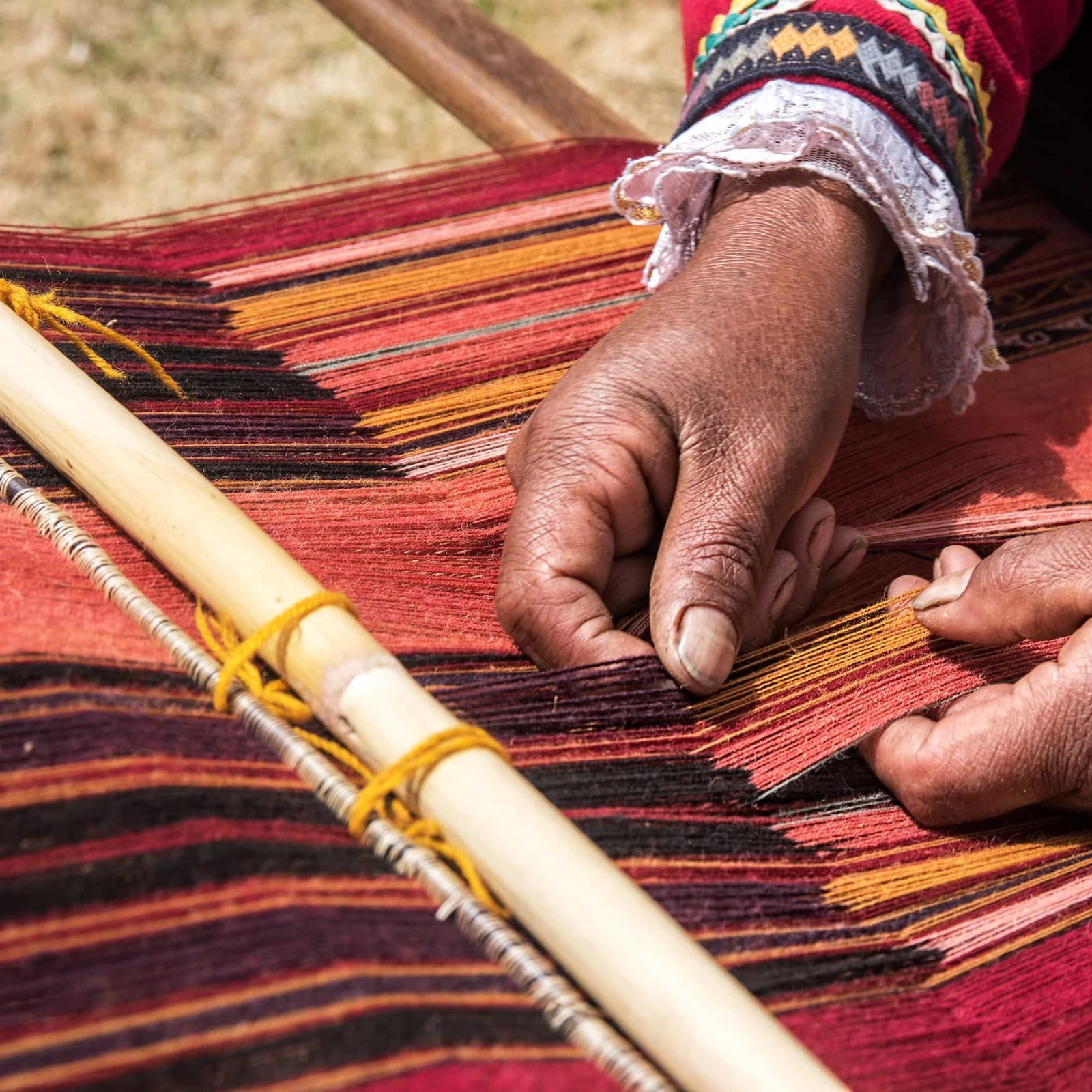
15. Just Sit in Plaza de Armas and Feel
In the heart of Cusco, Peru, there’s a place where history breathes, time slows, and the past and present meet under an open sky: the Plaza de Armas. Surrounded by grand colonial arcades, cathedrals built atop Inca foundations, and the ever-present pulse of Andean life, this is more than a city square—it’s a living, sacred space.
You don’t need a plan here. Just sit on a stone bench, sip a warm coca tea, and let the rhythm of Cusco unfold around you. Watch street performers dancing to traditional music, children chasing pigeons, travelers arriving wide-eyed from the Sacred Valley, and local women selling woven bracelets with stories in every thread.
The Cathedral of Cusco and the Church of the Society of Jesus loom on either side, anchoring the square in centuries of faith, conquest, and resilience. Yet despite the weight of its history, Plaza de Armas feels light—open, humming, alive.
Come at sunrise, when the city stirs quietly. Come at sunset, when the golden light hits the stone and shadows stretch long. Come at night, when everything softens and the square glows with warmth.
Sometimes, the most powerful thing you can do in Cusco is… nothing. Just be. Just feel. And let this ancient city leave its mark on you.

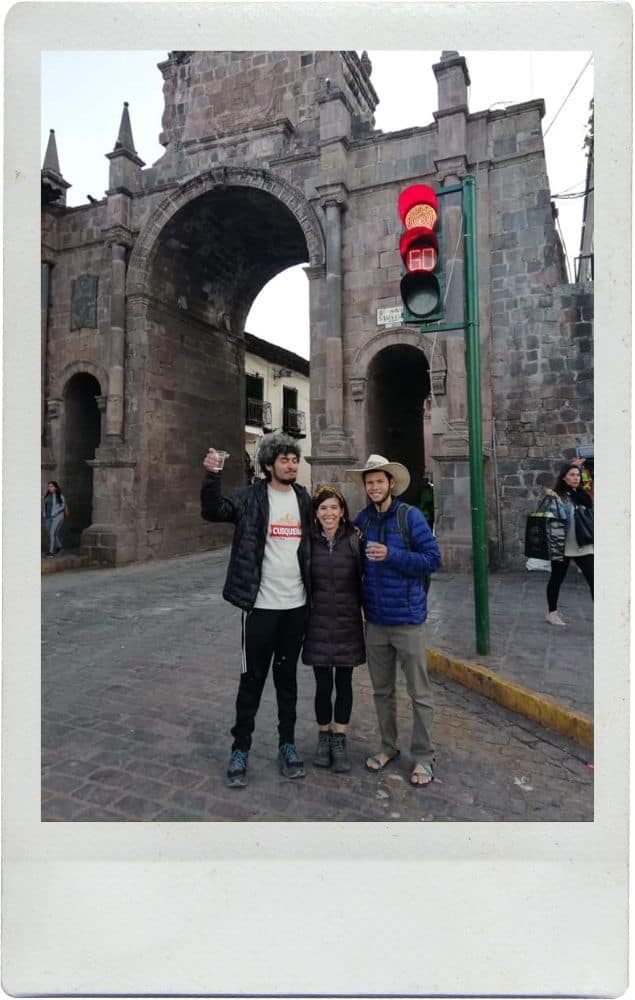
Cusco isn’t a place you simply visit—it’s a place that changes you. From the sacred stones of Sacsayhuamán to the quiet offerings at a cacao or fire ceremony, every corner of this ancient city invites you to slow down, listen, and remember what it feels like to travel with meaning.
Whether you’re weaving stories with Quechua artisans, wandering the San Blas neighborhood, or just watching the sun dip behind terracotta rooftops from Plaza de Armas, Cusco, Peru wraps its history around you like a woven textile—warm, intricate, and full of spirit.
And when your time here ends, you’ll realize: the most amazing things to do in Cusco aren’t just activities to check off a list. They’re invitations. To feel. To learn. To remember something ancient in yourself.
From Cusco, your path only widens. Whether you’re heading deeper into the Sacred Valley, trekking to Machu Picchu, or exploring inner landscapes through ceremony—this city is the gateway.
Let it guide you.


